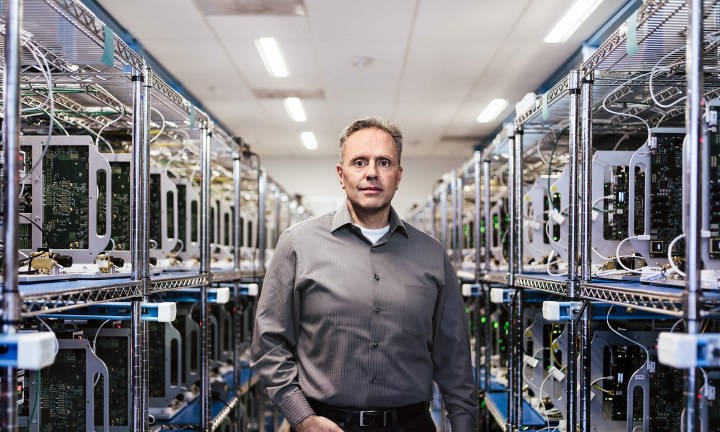
Apple’s hardware division has lately taken a backseat in terms of publicity to, say, Johnny Ive’s design labs and Angela Ahrendts’ retail operation, but Srouji led Bloomberg on a tour of the iPhone maker’s chip design process at Apple’s Cupertino, California and Herzliya, Israel chip facilities this week. The tidbits are tantalizing.
Srouji, a graduate of Israel’s Technion, is certain an accomplished fellow. His December promotion to his current position of vice president makes him the highest-ranking Israeli in Silicon Valley, according to the Haaretz newspaper. He’s fluent in Arabic, Hebrew, and French.
But perhaps more fascinating than the man is the division he built from the ground up. The first iPhone, Srouji explains, was essentially cobbled together from off-the-shelf parts — parts that included a Samsung chip used in DVD players. “Steve [Jobs] came to the conclusion that the only way for Apple to really differentiate and deliver something truly unique and truly great, you have to own your own silicon,” he told Bloomberg. “You have to control and own it.”
Apple’s then-hardware executive Bob Mansfield recruited Srouji to lead an in-house overhaul of Apple’s semiconductor efforts, and in the short span of a year Srouji spearheaded the acquisition of Silicon Valley chip startup P.A. Semi and grew the the company’s hardware division from 40 engineers to 150.
From that point on, silicon development accelerated. Srouji’s team designed the A4, the heart of the iPad and iPhone 4, specifically to accommodate the latter’s Retina display. The subsequent, iPad-powering A5X and A6X chips were similarly tailored to help Apple’s newer iPads keep up with the processing demands of their high-resolution displays.
Srouji’s headliner, though, was arguably the A7, the first smartphone chip with 64 bits. It took the industry by surprise; chipmaker Qualcomm, which at the time lacked an answer to Apple’s new architecture, started investing significantly in the development of a competitive product. “The chip architects at Apple are artists, the engineers are wizards,” said Srouji. “When we pick something, it’s because we think there’s a problem that nobody can do, or there is some idea that’s so unique and differentiating that the best way to do it is you have to do it yourself.”
The team achieved another silicon miracle last year with the debut of the iPad Pro’s A9. The tablet’s stylus, software, and other hardware issues forced Apple to push back the launch of the Pro from spring 2015 to the fall of that year. Initial plans called for the Pro to pack the A8X, the processor found in the iPad Air 2, but Srouji’s team took the delay as an opportunity to shift the A9X’s release forward. It debuted alongside the iPhone 6s’s A9.
Srouji describes the chipmaking process as a difficult balance between the features Apple’s software programmers request and space constraints imposed by the company’s industrial designers. His team’s custom designs have enabled such functionality as the rapid-fire photo burst mode, video calling, an always-on voice assistant, and an optimized battery and storage. But ultimately, the fundamentals are essential. “You get one transistor wrong, it’s done, game over,” he said. “Each one of those transistors has to work.”
To prevent any unpleasant surprises when Apple’s new silicon ships in its latest iPhones and iPads, the company’s hardware team subjects candidate chip designs to rigorous tests. Large, remotely operated boxes described as resembling “Zambonis” scan for potential errors in candidate chip architectures for up to months at a time. They’re then tested under extreme conditions and temperatures.
Srouji’s philosophy is one of optimism, though. “When designers say, ‘This is hard,’ my rule of thumb is if it’s not gated by physics, that means it’s hard but doable.”
Editors' Recommendations
- Google witness accidentally reveals how much Apple gets for Safari search
- Apple is trying to guarantee enough M3 chips for the next year
- Apple could soon put an M3 chip in its worst laptop
- Microsoft might be building its own version of the Apple M1 chip for Surface
- What Apple should have revealed at its iPhone 13 event (but didn’t)


